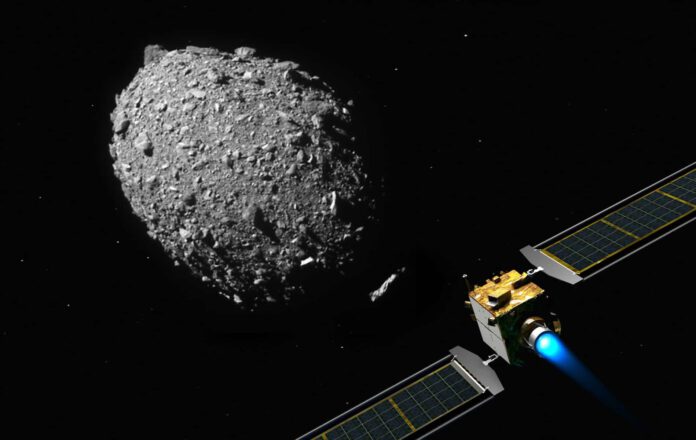
Scientists have discovered that the asteroid Dimorphos was accidentally reshaped following the 2022 impact, now resembling a nibbled M&M rather than a UFO.
ESA’s Hera Probe
The European Space Agency’s (ESA) Hera space probe still has yet to confirm, but for now, an intriguing conclusion has been drawn by scientists: it is highly likely that Dimorphos’s form has been significantly changed after the NASA’s Double Asteroid Redirection Test (DART) impact. What is even more remarkable is that the collision left no crater behind, likely due to the impact entirely overturning the surface based on simulations.
Researchers had previously determined that the orbit of Dimorphos had changed post-collision with DART. Moreover, scientists observed a massive dust cloud of over 10,000 kilometers, triggered by the impact, in the following months. However, whether the impact had extensive consequences for Dimorphos’s shape remained unclear. Later this year, ESA’s Hera probe will be sent to Dimorphos for detailed images and research on the resulting crater, with the probe set to arrive at the asteroid in 2026. But Swiss researchers chose not to wait that long and turned to simulations instead, which now suggest that Hera might find no crater. The research was published in Nature Astronomy.
Simulations
The researchers used a simulation program called Smoothed Particle Hydrodynamics (SPH) for the study, replicating 250 different scenarios. Scientist Sabina Raducan, who contributed to the research, explained, “Simulating such tasks is a very intensive process, with each simulation taking about a week and a half to complete. These simulations specifically focused on the first two hours after DART’s impact. However, there were also numerous unknowns that we had to discover by generating various simulations and comparing these to what we actually observed.” In the end, the results were most congruent with the simulation, showing Didymos fully transformed instead of gaining a crater.
Debris
Raducan stated, “The findings suggest that Dimorphos is a relatively weak ‘rubble-pile’ asteroid.” meaning it is simply a heap of debris held together loosely by gravity. An impact in such a ‘rubble-pile’ likely results in a transformation of the entire object instead of creating a crater. “Hera probably won’t find a crater left by DART. Instead, it will find a completely different heavenly body. Our simulations suggest that Dimorphos’s original UFO shape on the impact side is somewhat blunted. If you could compare Dimorphos to a chocolate M&M in principle, the asteroid now looks like someone took a bite out of it,” Raducan predicts.
Researcher Patrick Michel found the results intriguing, stating, “During the study, we found that Dimorphos is essentially a collection of rocks held together by gravity. The asteroid has almost no cohesion, which aligns with findings about other asteroids, such as Ryugu and Bennu. We’ve noticed that these asteroids do not seem to be very sturdy.” He concludes, “We must conduct much more research to learn about asteroid cohesion. Currently, we only have data from three asteroids, which is not enough for statistical robustness. However, the idea that smaller asteroids have very little cohesion is intriguing. Also, it offers promising news for Earth: it makes it easier to develop defensive technologies that can deflect incoming asteroids.”











